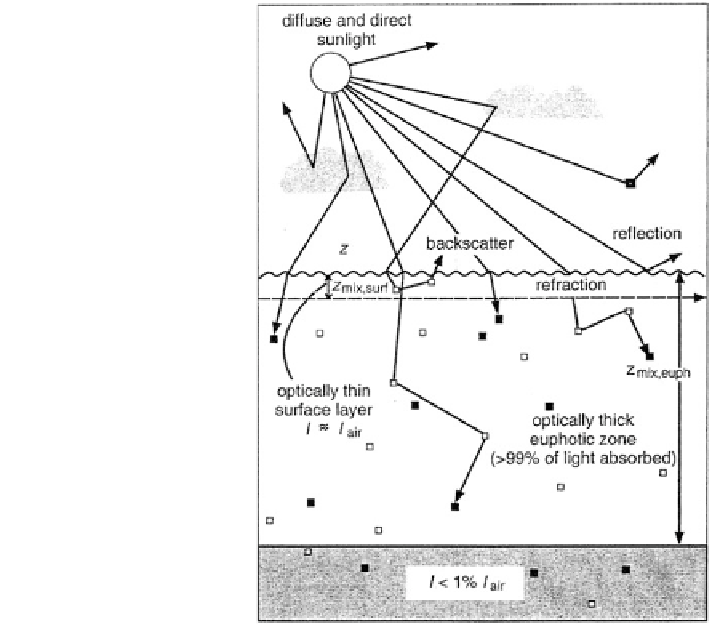Geoscience Reference
In-Depth Information
Fig. 13.3 Fate of photons in
a natural water body. Open
Square reflective particles;
Filled Square absorptive
particles or molecules
(Schwarzenbach et al.
2003
)
water body at various angles. From Fig.
13.3
, the distribution of photons in a
natural water body may be seen. The rate of transformation may be enhanced in
the presence of additional reactants of natural or anthropogenic origin. Contami-
nant photolysis in water has been studied extensively over the last three decades
(e.g., Zepp
1980
; Miller and Crosby
1983
; Zafiriou
1984
; Leifer
1988
; Acher and
Saltzman
1989
; and Schwarzenbach et al.
2003
).
The solar spectrum at a particular location depends on a large range of factors,
including season of the year, time of day, weather conditions, and atmospheric
pollution. The intensity of solar irradiance depends on the optical thickness of the
atmosphere, which together with ozone absorption and molecular scattering, are
strongly
wavelength
dependent.
Direct
and
indirect
photoreactions
can
be
distinguished.
Direct photolysis processes involve the direct adsorption of light by the
substrate
P
þ
light
!
P
!
products
ð
13
:
8
Þ

